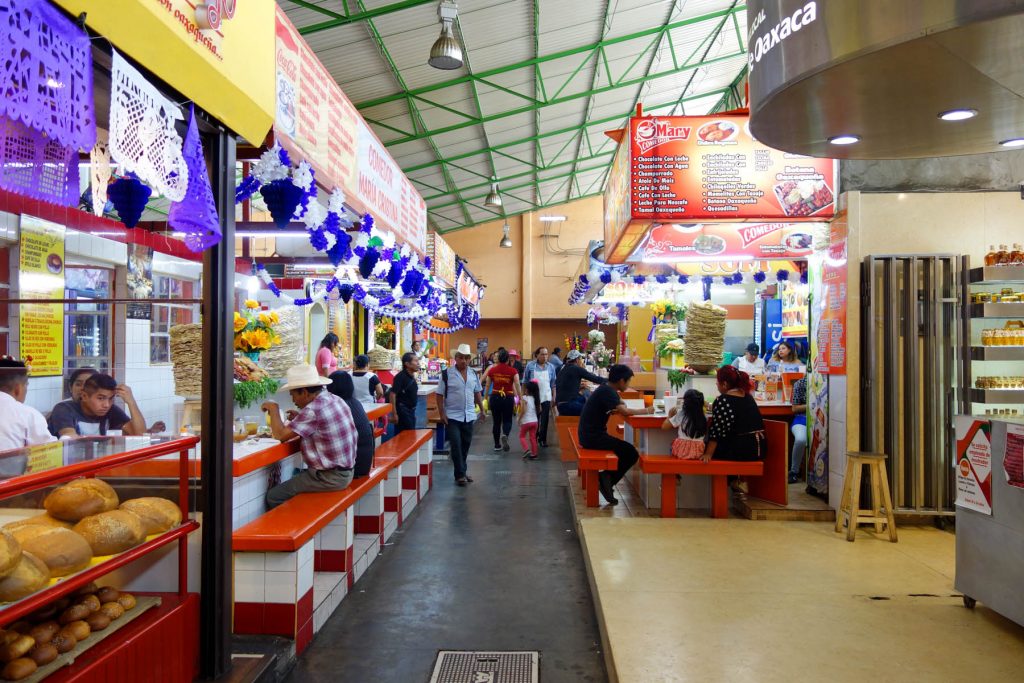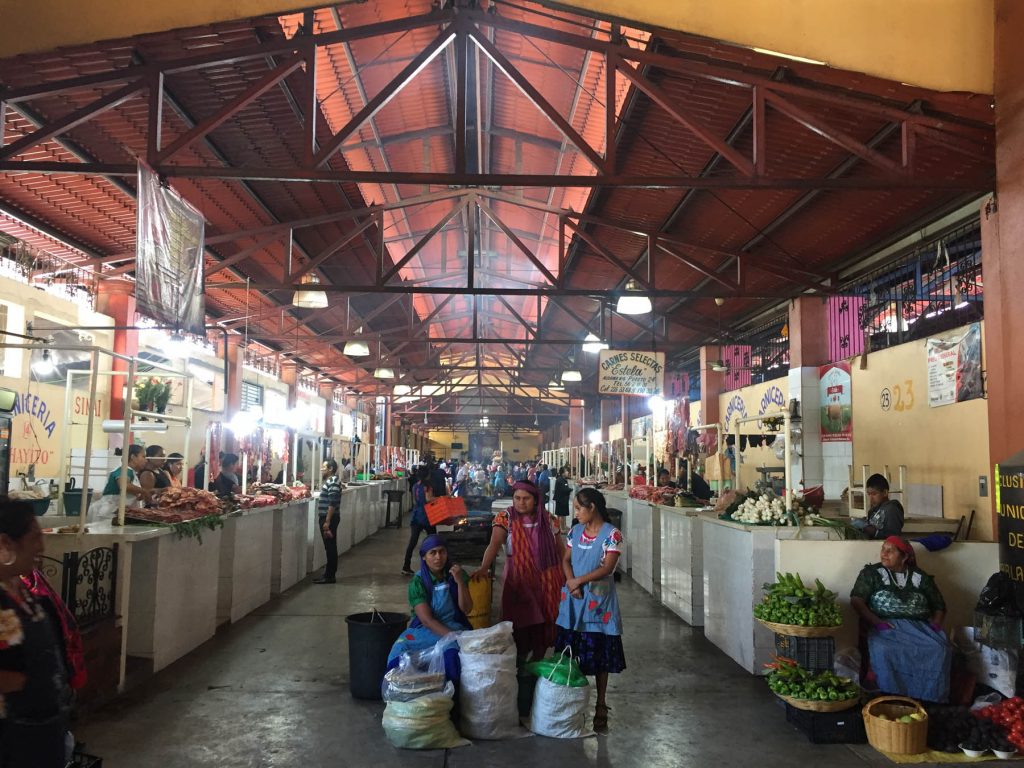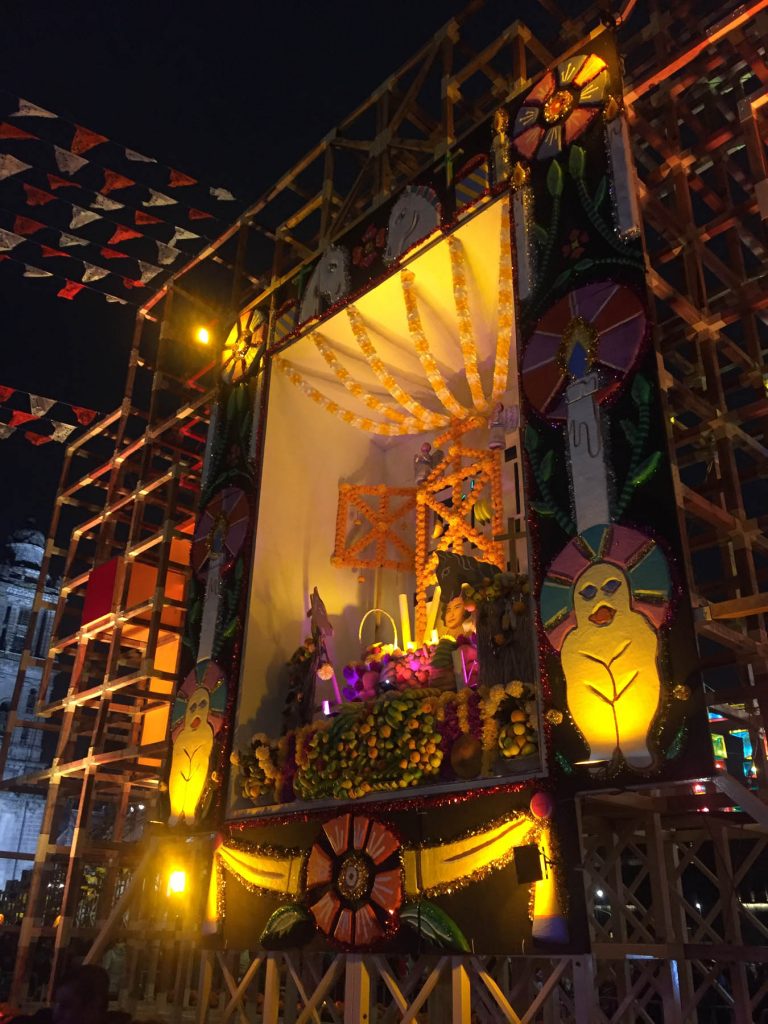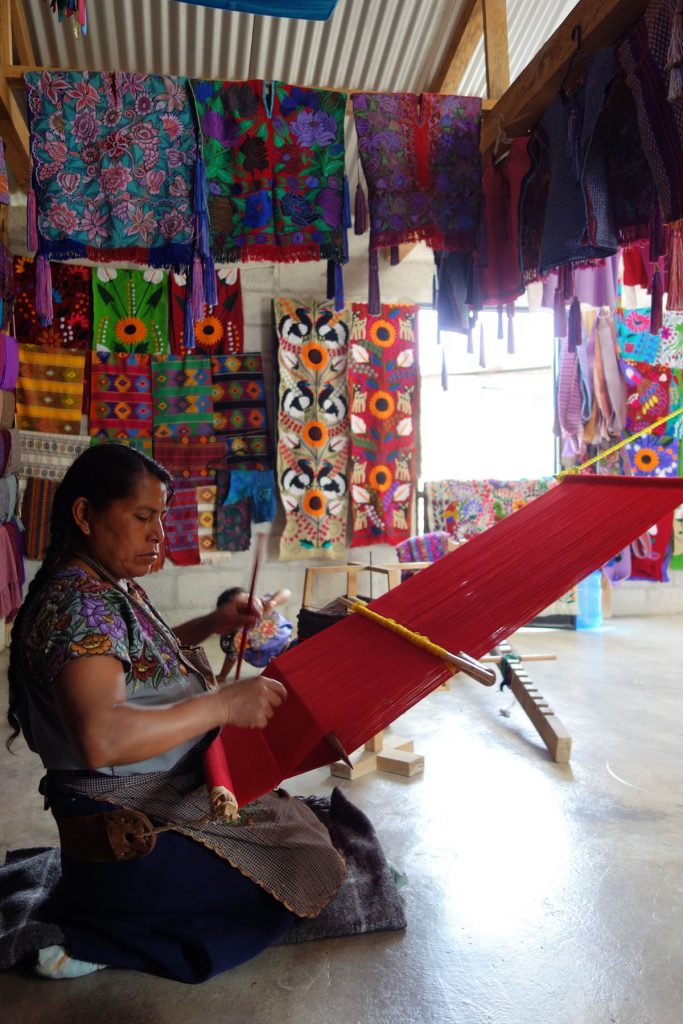Mercado 20 de Noviembre de Oaxaca
© Laure Nashed
Mercado Oaxaca
© Laure Nashed
Supermercado Ciudad de México © Laure Nashed
Día de los Muertos, Ciudad de México 2019
© Laure Nashed
San Juan Chamula
© Laure Nashed
Día de los Muertos, Ciudad de México 2019
© Laure Nashed
In the introduction to the book “History of Mexico – a journey from prehistoric times to the present day”, Iñigo Fernández writes “To understand Mexican history it is necessary to understand that Mexico is neither indigenous nor Spanish, to put it differently, Mexico is the product of a fusion of these two cultures; a product which not only inherited “paternal and maternal” elements, but was also able to develop on its own in the course of the centuries to acquire a personal stamp as a nation.”
The comparison of two formative origins and the development into something of its own is the theme of this blog entry. It is important to understand that this country is 47 times the size of Switzerland and is characterised by enormous diversity. The climate is completely different in the south than in the north; in central Mexico, at the time of the Spanish conquest, the Aztecs ruled, in the south, the Mayas ruled, etc. In the next few paragraphs I describe my view of Mexican culture with a focus on the heritage of the known ancestors, as far as I have seen and experienced it so far with additions revealed to me by the internet. In the next blog entry, documentary films, podcasts and interesting websites are listed.

Mercado 20 de Noviembre de Oaxaca © Laure Nashed
In my eyes, there are many things that are strongly influenced by the Aztec or Mayan culture, such as the food, which still consists largely of corn and chilli, as well as the striking place names and traditional music. The BBC documentary described in the last entry shows this well.
Rather rarely in everyday life do I hear indigenous languages, which again may be because I stay in Mexico City and in city neighbourhoods where these languages are little spoken. According to Wikipedia, 7-13% of the Mexican population speak an indigenous language.
Those interested in the language can find an introduction (suitable for young and old) to the Nahuatl language and its origins on Youtube.

Mercado Oaxaca © Laure Nashed
The official language today is Spanish and the majority of the population understands and speaks Spanish. Even though Spanish sounds different here than in Spain – many say the pronunciation is “clearer” – it is probably the most obvious feature of the Spanish conquest in the 16th century. The Asociación de Academias de la Lengua Española (official institution for the cultivation of the Spanish language), led by the Real Academia Española, was founded in Mexico, but its headquarters were subsequently transferred to Madrid and are still in Spain today.
Religion plays a major role in Mexico. 87% of Mexicans describe themselves as Catholics, which they not only state on paper but also often practice. Not particularly representative, but a daily reminder of the predominant religion in Mexico I get every day when I leave my flat: at the crossroads in front of our house and directly in front of the supermarket and next to a telephone pillar is a small altar that flashes nightly.

Supermercado Ciudad de México © Laure Nashed

Día de los Muertos, Ciudad de México 2019 © Laure Nashed
From today’s perspective, the colonial powers succeeded in missionising Mexico. But Mexican Catholicism is still a mixture of the polytheism of the indigenous peoples with their numerous gods and the Catholicism introduced by the Spanish. We experienced this mixture of religions and rituals during our visit to San Juan Chamula. In a village in the southern state of Chiapas the white church with bright green decoration is located. Upon entering the church, one is surprised with an experience for all the senses. The floor is littered with pine needles, only a little natural light falls into the church, candles are set up everywhere and the “Tzotzil of Chamula” sit on the floor and swing live chickens over the candle flames to capture the demons. The chicken’s neck is then broken and it is buried together with the demons. The ritual does not seem very Catholic.
The Süddeutsche Zeitung describes the experience in more detail: https://www.sueddeutsche.de/reise/mexiko-huehnerblut-und-coca-cola-1.575376
To get a picture (of a place that officially may not be photographed): https://www.cityexpress.com/blog/san-juan-chamula-chiapas

San Juan Chamula © Laure Nashed
The customs of the Tzotzil are an exception and a more extreme example. Known all over the world for this is the Día de Muertos, the Day of the Dead. This custom has been classified by UNESCO as one of the masterpieces of the oral and intangible heritage of humanity. The name of this classification speaks for itself. Even though this day is controversial because it is increasingly becoming a consumer event, the preservation of this festival of honouring the deceased shows that the Church is still confronted with traditional, indigenous customs today and feels compelled to take a stand on them. Here is an interesting BBC podcast about religion in Mexico: https://www.bbc.co.uk/sounds/play/b0bgpqgh
In the case of Día de Muertos, Alan Knight suggests in the podcast that this day is too important in Mexico for the Church to call it unacceptable.
Also worth knowing is that as early as 1917, the constitution stipulated the separation of religion and politics.

San Cristobal de las Casas © Laure Nashed
How much the Spanish conquest influenced Mexican art I cannot say – I lack the knowledge. Also, the term art itself is vague. My first impression of the world-famous murals, known as “muralismo mexicano”, is that they partly contain motifs from indigenous history, but the painting technique may well be European. The handicraft art, on the other hand, is very locally influenced and thus linked to the local tradition of the descendants of the Maya and Aztecs. This is particularly visible in textile production and weaving. Fabrics are still dyed naturally, as they were more than 500 years ago.
Worldwide interest in the architectural heritage of the Maya and Aztecs was aroused in the mid-19th century. Since then, enthusiastic researchers have been searching for answers and for more ruins. No one knows how many pre-Columbian ruins there are in Mexico. In 2018, thousands more ruins were discovered in Guatemala using new laser technologies. Who knows how many more lie hidden in Mexico.
The Maya and Aztecs were known for unimaginably advanced and sophisticated cities as well as for their fascinating astronomical and mathematical understanding. The recommendations mentioned in the blog entry “The History of the Maya and Aztecs: Documentaries and Podcasts” let you dive into the worlds of the Maya and Aztecs.
Today, the ruins are used for tourism. None of the pre-Columbian settlements are still inhabited today, as far as I know. The temples and pyramids and all the objects found on site are an important part of Mexico’s cultural heritage.
The cities inhabited today are partly built on ruins of pre-Columbian settlements. Today’s capital of Mexico stands on the ruins of the capital of the Aztec empire. The Aztec city of Tenochtitlan was built within 200 years on an island in the middle of Lake Texcoco. The city was designed on a grid and developed into the largest pre-Columbian city in North America. University art history lecturer Daniela Gutierrez shares her very clear presentation on the history and urban planning of Tenochtitlan.
Historian and BBC presenter Dan Snow’s somewhat shaky video shows the clash between the cultures of the Aztecs and the Spanish conquistadors, using the example of the Templo Mayor and Mexico City Cathedral. As he says at the end of the video, the conquest of the city of Tenochtitlan and the missionisation of its inhabitants was radical. Within just a few decades, a Spanish colonial city emerged. In addition, 90% of the indigenous population died as a result of diseases introduced by the conquerors.
After the conquest in 1519, the city was ruled and built up by the Spanish for over three centuries. In the main colonial cities of Mexico City, Huejotzingo, San Miguel de Allende, Morelia, Oaxaca, Guanajuato and Guadalajara, the imposing architecture of the Spanish is very present. Mexico City is home to the most famous buildings of Spanish colonial architecture in Mexico, such as the Cathedral, the Palacio Nacional, the Castillo de Chapultepec or the Palacio di Iturbide. On the other hand, Oaxaca’s urban structure – one- to two-storey terraced houses of the colonial era consistently arranged on a grid pattern with magnificent inner courtyards – is strongly influenced by the colonial era in its entirety. I have not yet found out whether the colourful façades were chosen by the Spanish or the indigenous population. According to Wikipedia, the “Leyes de las Indias”, the Laws of the Indies, defined the urban planning of the Spanish colonial power.
To return to the quote from Iñigo Fernández mentioned at the beginning, I hope to be able to show in the coming months what has resulted from the fusion of the two origins – the Indigenous and the Spanish. What makes Mexico different today? How do Mexicans deal with their heritage?
Addendum: In conversation, a Mexican recently told me that even today people trust the original “European” more than the “Indogeneous”. In his opinion, the indigenous population has little self-confidence. I’ll see if I can find out more about that.




